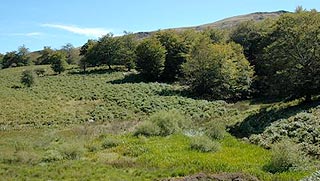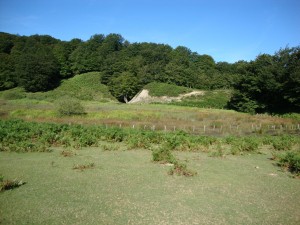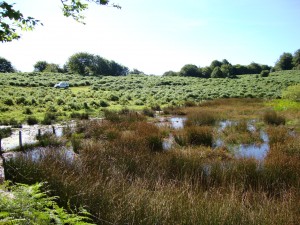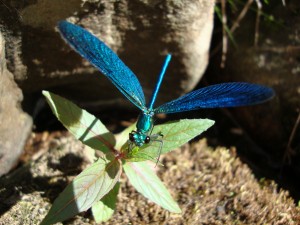Name of the site: Azaldegi
Protection categories: SAC Monte Alduide
Location: Baztan
Region: Navarre
Coordinate references: XN2469
See PDF map
Oval-shaped mire with barely any slope, almost entirely fenced off, with the notable exception of the springs that feed it, which are to the South of and beyond the fence.
The mire drains at a single point: where it spills over a dike built 14 years ago into a stream which runs downhill through a deep, narrow gully. The main differences between the different areas in the mire are due to the different physiognomies of the plant communities that have taken hold.
- MOST IMPORTANT VALUES
Uniqueness
The mire is one of the rare acid mires in which Narthecium ossifragum and mats of sphagnum have thrived thanks to livestock being kept out.Biological and ecological values
Worthy of note are the outstanding development of the communities of Hypericum elodes and Viola palustris with sphagnums; the community of Narthecium ossifragum and the promontories of Erico-Sphagnetum papillosi. Due to their scarce presence in the peatlands and mires studied, the aquatic community formed by Potamogeton polygonifolius and the community of Sparganium erectum subsp. microcarpum, which is probably more common in other types of paludal environment, are also relevant. Of the flora, the presence of Sphagnum subsecundum, which is rare in Navarre, should also be highlighted.Historical and paleoecological values
The site does not have a peat deposit.Habitats of Community Interest
Hábitat Nombre 3150 Lagos eutróficos naturales con vegetación Magnopotamion o Hydrocharition 4030 Brezales secos europeos 6410 Prados con molinias sobre sustratos calcáreos, turbosos o arcillo-limónicos (Molinion caeruleae) 7140 «Mires» de transición Habitats according to other classifications
Hábitat CINH Sintaxón 3150 215040* Com. Potamogeton polygonifolius (Nymphaeion) 4030 303044 Erico tetralicis-Ulicetum gallii ulicetosum gallii var. típica 6410 541030* Com. Juncus effusus y Scutellaria minor 6410 541030* Com. Molinia caerulea (Juncion acutiflori) 7140 211012 Hyperico elodis-Potametum oblongi 7140 211010* Com. Viola palustris e Hypericum elodes 7140 211010* Com. Juncus bulbosus y Callitriche stagnalis 7140 621231 Alismato-Sparganietum microcarpi 7140 613010* Erico tetralicis-Sphagnetum papillosi 7140 617010* Com. Narthecium ossifragum Flora
The most striking feature of Azaldegi is the profusion of Narthecium ossifragum in large waterlogged areas. Its great growth (up to heights of 80 cm) hinders the growth of other species native to waterlogged areas. Consequently, species which are extremely common at eastern Basque sites, such as Carex demissa, Carex panicea and Wahlenbergia hederacea, cannot be found. Another notable presence is that of Sparganium erectum subsp. microcarpum, albeit in non-peat environments, such as a channel and the waterlogged area created by the artificial dam.
The fact that the entire perimeter of the site is fenced off means that there are no meadows, reflected in the absence of Festuca nigrescens subsp. microphylla, Danthonia decumbens and Agrotis curtisii. Heathland has, however, found refuge in an area near the dam where rubble has been dumped.
The apparently growing appearance of Salix atrocinerea, the entire mixed area being covered with small seedlings, not to mention quite a few examples which are already fairly large, should also be highlighted.
55 species of vascular plant and 12 species of bryophyte have been detected. Of the bryophytes, the presence of Sphagnum subsecundum, none too common in Navarre’s mires, should be noted.View in the vicinity of the dike, with the most waterlogged area covered with Sparganium erectum. (M. Infante)
View of the northern area of the site. (P. Heras).
- PHOTOS
-






